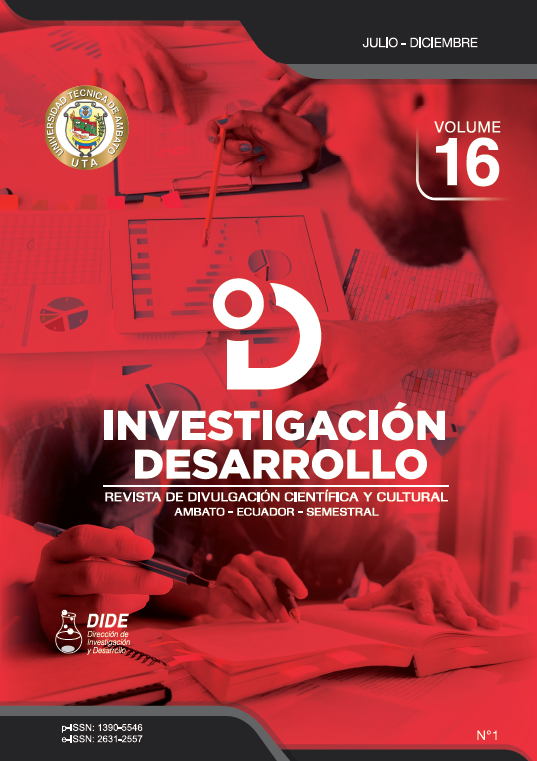Ingeniería inversa aplicada a un dispositivo de ventilación mecánica con presión positiva CPAP
DOI:
https://doi.org/10.31243/id.v16.2022.1801Keywords:
CPAP, COVID-19, mechanical ventilation, positive pressure, oronasal mask, reverse engineeringAbstract
The high global impact caused by COVID-19 has changed the daily routine to a completely different lifestyle, where a rapid medical response is required, for this reason, through the project called "CPAP SAMAY UTA - UCL" through of adaptations and innovations the construction of a non-invasive ventilatory support device, through the application of reverse engineering. In which the CAD model developed by the University College of London called "UCL VENTURA" is replicated as an initial pattern to perform the analysis of its operation; then the components are determined in order to identify those that must undergo major changes, both dimensional and material. Once these elements have been identified (oxygen inlet and support), we proceed with the resizing and calculations of the tightening moment necessary to place the valves and flow inlet and outlet elements. Finally, by means of CAM machining, the most economical, small and easy-to-handle prototype is manufactured, whose oxygen pressure at the inlet is four bars and at the outlet delivers a positive pressure of up to 20 mmH2O that enters the airways through an oronasal mask.
Downloads
Downloads
Published
Issue
Section
License
Copyright (c) 2022 Investigación y Desarrollo

This work is licensed under a Creative Commons Attribution 4.0 International License.






.png)





